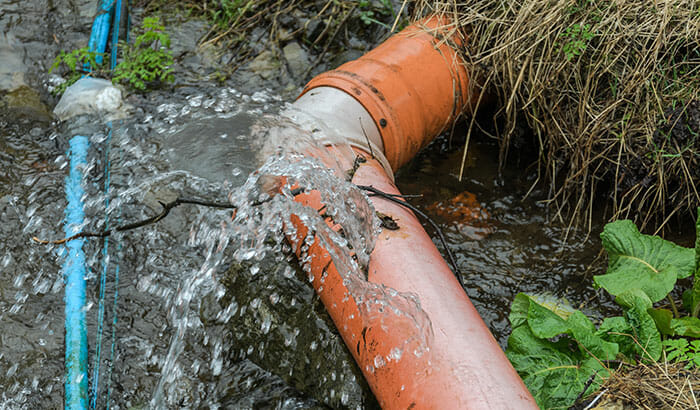Preventing a Burst Pipe: Tips for Protecting Your Plumbing During Winter
Preventing a Burst Pipe: Tips for Protecting Your Plumbing During Winter
Blog Article
Stopping Burst Piping: Essential Tips to Secure Your Plumbing
Avoiding burst pipes is a crucial problem for home owners, particularly during chillier months when the threat of freezing is heightened. Carrying out tactical procedures such as appropriate insulation, regular examinations, and maintaining regular indoor temperature levels can substantially lower the likelihood of pipeline failing.
Understand Pipeline Vulnerabilities
Recognizing pipe vulnerabilities is crucial for efficient pipes upkeep and preventing costly damage. Numerous aspects add to the vulnerability of pipelines to ruptureds, consisting of product composition, age, and environmental conditions. Older pipelines, particularly those made from galvanized steel or polybutylene, commonly deteriorate in time, resulting in enhanced threat of tears and leaks.
Temperature level changes can additionally substantially influence pipe integrity. In colder environments, water trapped in pipelines can freeze, putting in and broadening stress on the pipeline wall surfaces, which may eventually result in a burst. High water pressure can strain pipes, specifically at bends and joints, heightening the chance of failure.

Insulate Piping Effectively
Proper insulation of pipes is important for preventing freezing and subsequent bursts throughout winter (burst pipe). Insulating your pipes system properly safeguards against temperature level goes down that can cause costly damages. Begin by recognizing at risk locations where pipes are subjected to outdoor temperatures, such as cellars, attic rooms, and exterior wall surfaces
Use foam pipeline insulation sleeves or wrap insulation tape around these locations to give a protective obstacle. Guarantee that all areas of the pipelines, specifically those with limited heat direct exposure, obtain sufficient insulation. Pay special attention to installations and joints, as these are more vulnerable to freezing.
When protecting, it's crucial to choose products that satisfy local structure codes and are appropriate for the certain setting. Fiberglass insulation is commonly recommended for its thermal resistance buildings. In addition, think about using warm cords or tape in extreme conditions, which can be connected in to provide extra warmth
Routinely check shielded pipes for any indicators of wear or damage, as endangered insulation can reduce its effectiveness. By taking these proactive procedures, you dramatically reduce the risk of pipeline ruptureds, ensuring a reliable plumbing system throughout the cold weather.
Maintain Consistent Temperature
A stable interior temperature is essential for stopping ruptured pipelines during the icy months. When temperature levels decrease, water within pipelines can freeze, creating and increasing pressure that might inevitably trigger the pipelines to burst.Using a programmable thermostat can help take care of interior temperatures successfully, making sure that areas with pipes stay warm also when the house is vacant.
This small circulation of water can protect against freezing by easing stress within the pipelines. By implementing these techniques, homeowners can substantially reduce the risk of pipe bursts and guard their pipes systems versus the extreme winter components.
On A Regular Basis Evaluate Plumbing
Routine inspections of plumbing systems are critical for avoiding ruptured pipelines and keeping overall home stability. Regular checks allow homeowners to recognize prospective issues before they rise right into pricey repair services or major water damages. Throughout these evaluations, it is vital to analyze noticeable pipelines for signs of rust, leaks, or wear. Pay unique attention to locations vulnerable to freezing, such as cellars, attic rooms, and exterior wall surfaces.
In burst pipe addition, examining connections and joints is crucial, as these factors are frequently prone to leaks. House owners need to also evaluate water pressure levels, as too much pressure can strain the pipes system and increase the danger of pipe ruptureds.
Consider organizing specialist plumbing evaluations at least when a year, specifically before winter, to guarantee your system is prepared for chillier temperatures. By being aggressive in your method, you can secure your home against the expensive and turbulent repercussions of ruptured pipes.
Know Emergency Procedures
Recognizing emergency situation treatments is important for every property owner, specifically after conducting normal pipes inspections. Being planned for a plumbing emergency can considerably minimize damages and save prices. Initially, situate your primary water shut-off shutoff; it is usually found near the water meter or where the main line enters your home. Acquaint yourself with its operation, as shutting down the water system swiftly can protect against considerable flooding.
Following, keep important tools useful. A plumbing emergency situation package ought to include a wrench, bettor, and towels, along with a flashlight and a pail for little leakages. Furthermore, consider having the contact details for a trusted plumbing conveniently available, must the situation intensify past your control.
If you find a leak or burst pipeline, promptly shut off the water and alert your plumbing. Furthermore, go to website document the damages with photos for insurance policy purposes. burst pipe. Understand the indications of possible pipes problems, such as unusual water pressure fluctuations or damp spots on wall surfaces
Inevitably, aggressive understanding and speedy action are vital in handling pipes emergency situations, guaranteeing your home continues to be protected and reducing possible damages.

Final Thought
In conclusion, stopping ruptured pipelines requires a complex strategy that includes understanding pipeline susceptabilities, proper insulation, maintaining regular indoor temperatures, normal examinations, and expertise of emergency treatments. By executing these crucial strategies, the risk of plumbing failures can be Look At This dramatically minimized, thus ensuring the long life and efficiency of the plumbing system. Proactive procedures not just guard versus prospective damage however additionally add to overall water conservation and the security of residential property.
In cooler climates, water caught in pipes can ice up, putting in and increasing stress on the pipeline wall surfaces, which may inevitably lead to a ruptured. When temperature levels decline, water within pipelines can ice up, increasing and developing stress that may eventually cause the pipes to burst. By implementing these strategies, property owners can significantly lower the risk of pipeline bursts and safeguard their pipes systems against the rough winter aspects.

Report this page